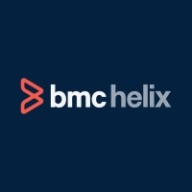


Find out what your peers are saying about Microsoft, Wiz, Amazon Web Services (AWS) and others in Cloud Workload Protection Platforms (CWPP).
| Product | Market Share (%) |
|---|---|
| BMC Helix Cloud Security | 0.4% |
| Wiz | 15.9% |
| Microsoft Defender for Cloud | 14.8% |
| Other | 68.9% |
| Product | Market Share (%) |
|---|---|
| IBM Turbonomic | 0.6% |
| Dynatrace | 20.8% |
| Datadog | 17.1% |
| Other | 61.5% |



| Company Size | Count |
|---|---|
| Small Business | 44 |
| Midsize Enterprise | 20 |
| Large Enterprise | 55 |
| Company Size | Count |
|---|---|
| Small Business | 41 |
| Midsize Enterprise | 57 |
| Large Enterprise | 147 |
SentinelOne Singularity Cloud Security offers a streamlined approach to cloud security with intuitive operation and strong integration capabilities for heightened threat detection and remediation efficiency.
Singularity Cloud Security stands out for its real-time detection and response, effectively minimizing detection and remediation timelines. Its automated remediation integrates smoothly with third-party tools enhancing operational efficiency. The comprehensive console ensures visibility and support for forensic investigations. Seamless platform integration and robust support for innovation are notable advantages. Areas for development include improved search functionality, affordability, better firewall capabilities for remote users, stable agents, comprehensive reporting, and efficient third-party integrations. Clarity in the interface, responsive support, and real-time alerting need enhancement, with a call for more automation and customization. Better scalability and cost-effective integration without compromising capabilities are desired.
What are SentinelOne Singularity Cloud Security's standout features?SentinelOne Singularity Cloud Security is deployed in industries needing robust cloud security posture management, endpoint protection, and threat hunting. Utilized frequently across AWS and Azure, it assists in monitoring, threat detection, and maintaining compliance in diverse environments while providing real-time alerts and recommendations for proactive threat management.
BMC Helix Cloud Security is a SaaS tool designed to help organizations reduce compliance and security lapses resulting from next-gen container and cloud technologies. The solution offers a fully transparent, user-friendly view of all compliance data gathered throughout container resources, cloud, and data centers. BMC Helix Cloud Security can be used to insert compliance inquiries precisely in DevOps workflows for immediate assessment in relation to critical “go, no-go” conclusions throughout the entire workflow.
BMC Helix Cloud Security offers enterprise organizations a unique compliance solution with robust functionalities to concentrate on numerous use processes that may interfere with digital transfigurations, such as:
BMC Helix Cloud Security is SaaS, which makes it a very flexible solution. It is able to integrate seamlessly with many of today’s enterprises’ demands. BMC Helix Cloud Security can easily perform as a policy-as-code (YAML) based protocol language, open RESTful APIs, or by seamlessly compiling extensible data connectors.
Many of today's enterprise organizations must comply with numerous policies and regulations to maintain effective operations. BMC Helix Cloud Security ensures an enterprise organization is able to satisfy regulatory standards such as Sarbanes-Oxley (SOX) Act, Defense Information System Agency (DISA), or any other stringent government or internal organizational compliance standards. The solution has a comprehensive compliance policy that utilizes mode-two capabilities and will ensure that an enterprise organization will greatly minimize or even negate the threat of ransomware and data breaches throughout its network.
BMC Helix Cloud Security will also see that container and container hosts are configured correctly and will then regularly audit to ensure compliance at the three important levels of compliance - images, daemon configuration, and host configuration.
BMC Helix Cloud Security is designed to identify vulnerabilities by dissecting and thoroughly investigating compliance data for container and cloud resources and delivering the outcomes through a friendly, easy-to-understand dashboard. The solution can also provide support for unique or custom sources, provided that data is in a JavaScript Object Notation (JSON) format.
BMC Helix Cloud security is also able to help discover and minimize vulnerabilities created by new services, objects, and resources instituted by containers and public clouds. These can sometimes be forgotten, creating a tremendous risk to an organization. BMC Helix Cloud Security will ensure these new services will be carefully and continually monitored to ensure industry and government standards and regulations are not being compromised. The solution is continually dissecting data and then will deliver outcomes in a dynamic, easy-to-understand dashboard.
BMC Helix Cloud Security offers a user-friendly, robust, complete compliance strategy to ensure organizations maintain the highest levels of productivity and profitability while negating the risk of any type of compliance vulnerabilities.
IBM Turbonomic offers automation, planning, and right-sizing recommendations to streamline resource management, improve efficiencies, and optimize costs across virtualized environments and cloud platforms.
IBM Turbonomic is valued for its capability to optimize resource allocation and monitor virtual environments efficiently. It facilitates automated decision-making in VM sizing, load balancing, and cost optimization for both on-premises and cloud deployments. Users can leverage insights for workload placement, ensure peak performance assurance, and effectively right-size across VMware and Azure. The ongoing transition to HTML5 aims to improve visual and navigational ease, while expanded reporting features are anticipated. Opportunities for improved training, documentation, and integrations enhance platform usability and functionality.
What Are the Key Features?In finance, IBM Turbonomic aids in maintaining platform efficiency during market fluctuations. Healthcare organizations leverage its capability for resource optimization during high-demand periods to enhance patient care support. Retailers use it for planning in peak seasons, ensuring resources align with fluctuating demand to maintain performance continuity.
We monitor all Cloud Workload Protection Platforms (CWPP) reviews to prevent fraudulent reviews and keep review quality high. We do not post reviews by company employees or direct competitors. We validate each review for authenticity via cross-reference with LinkedIn, and personal follow-up with the reviewer when necessary.